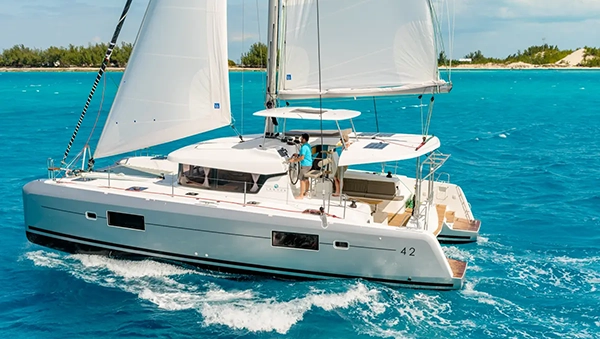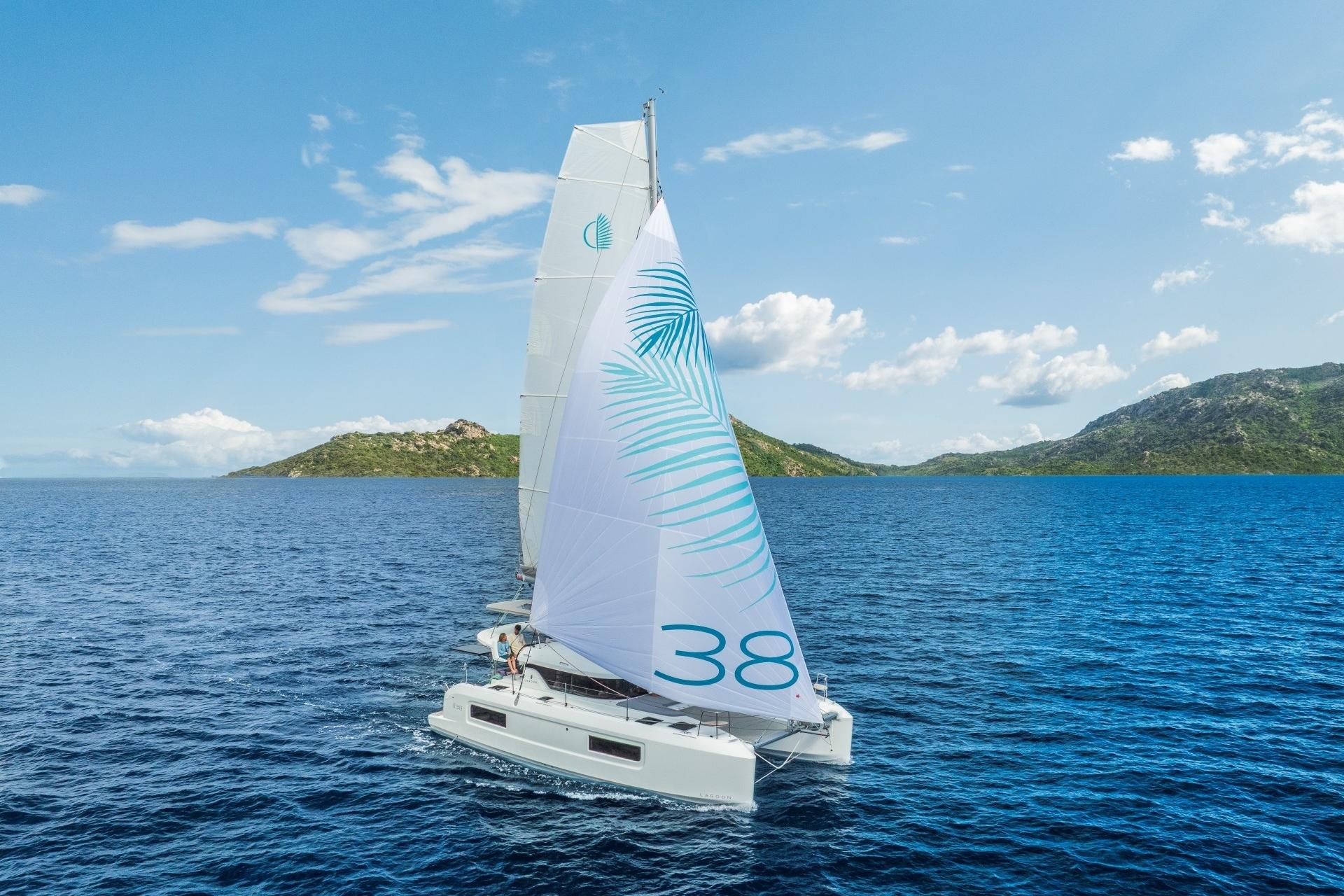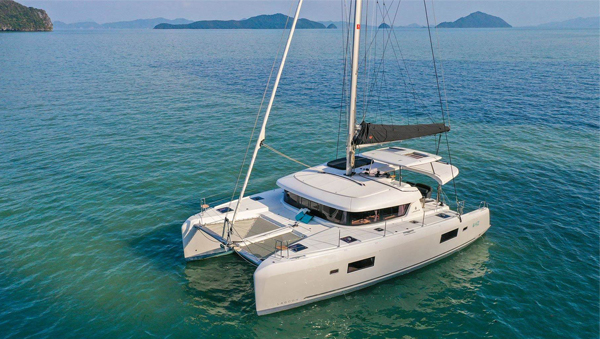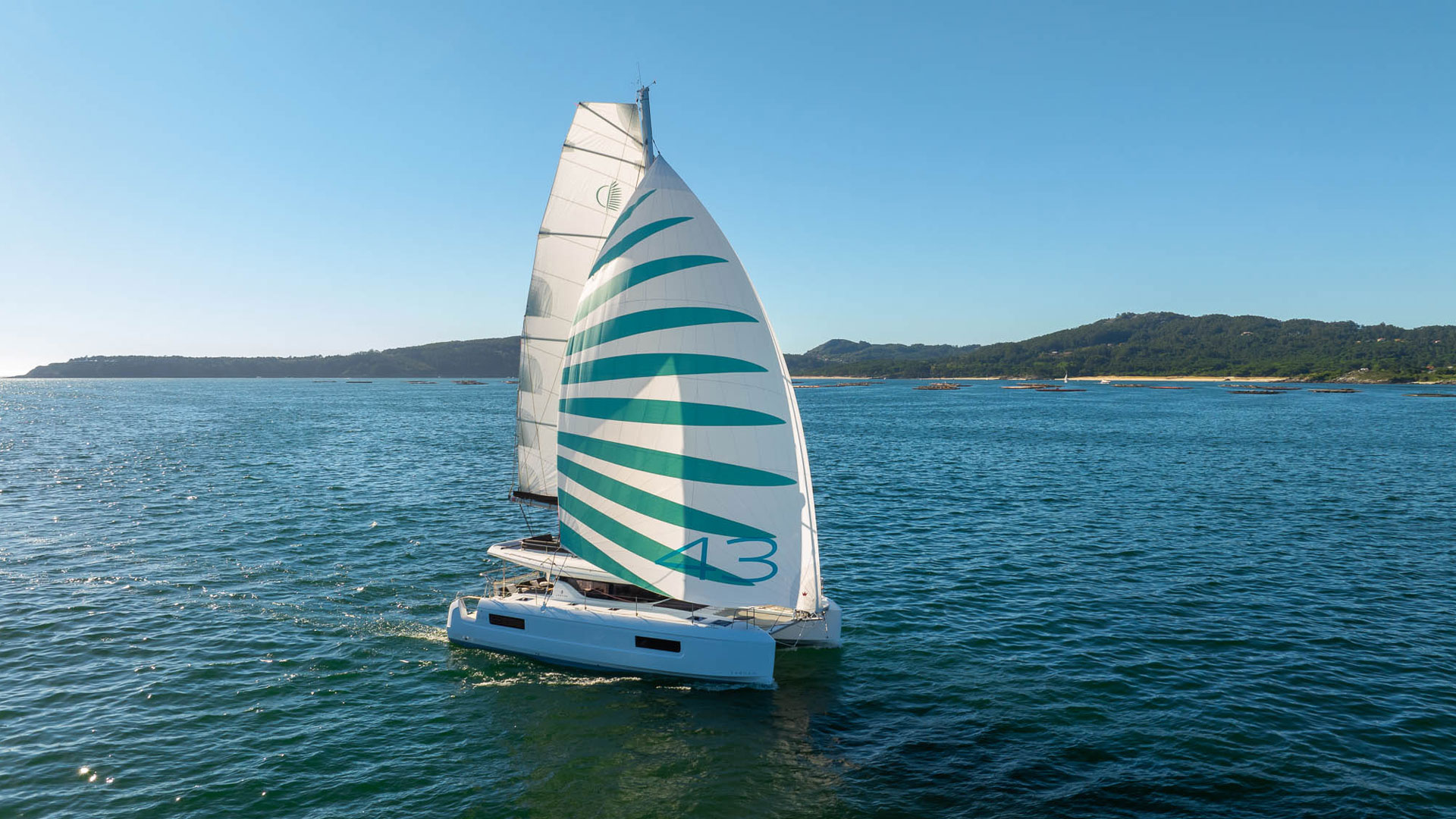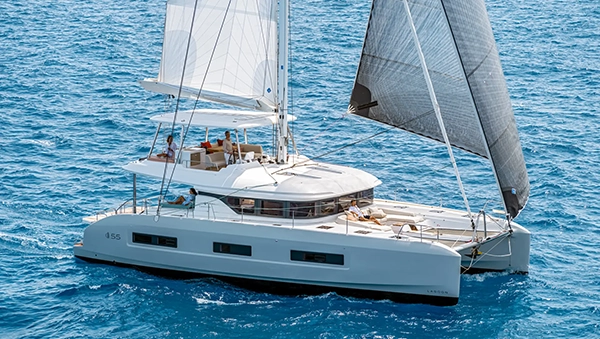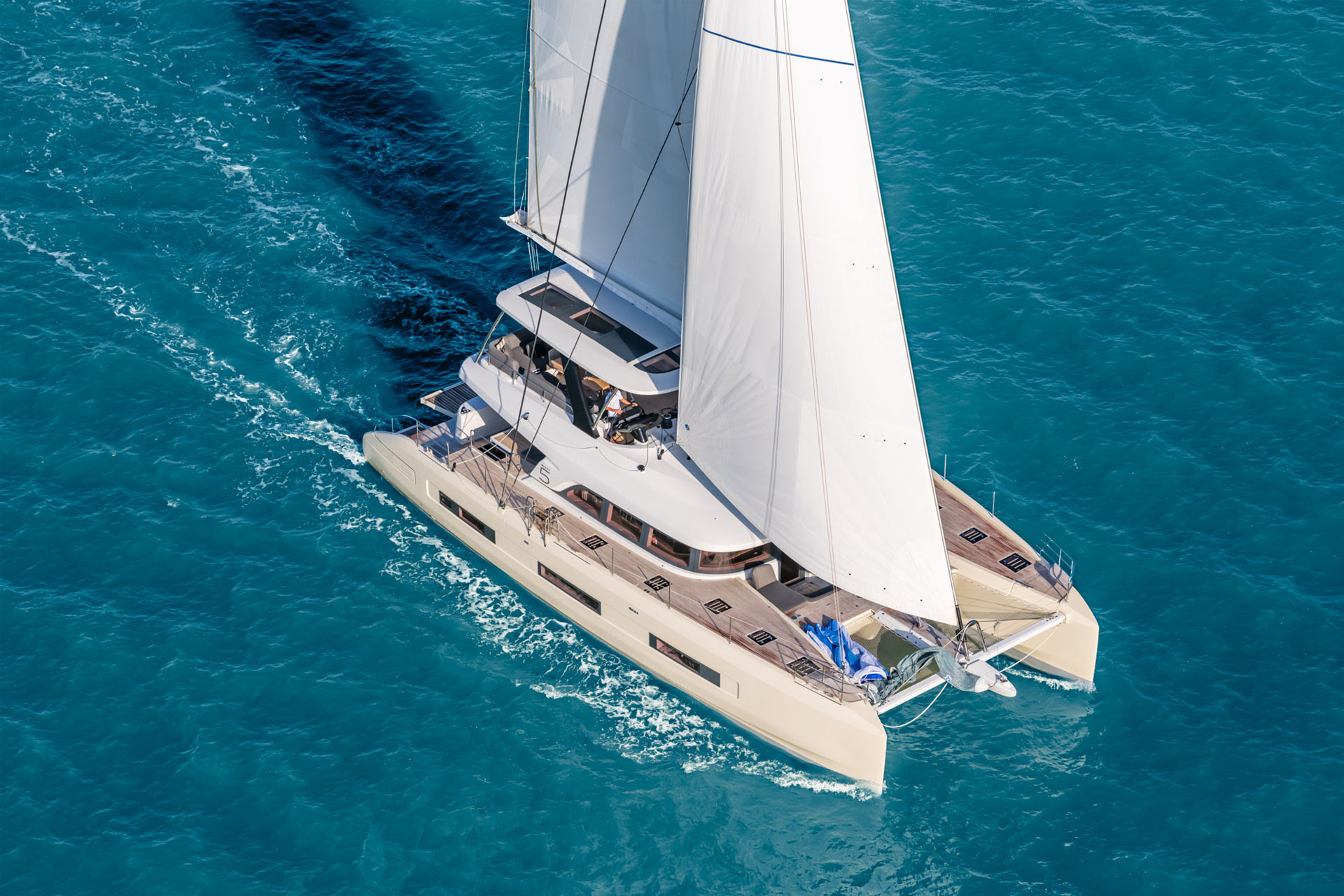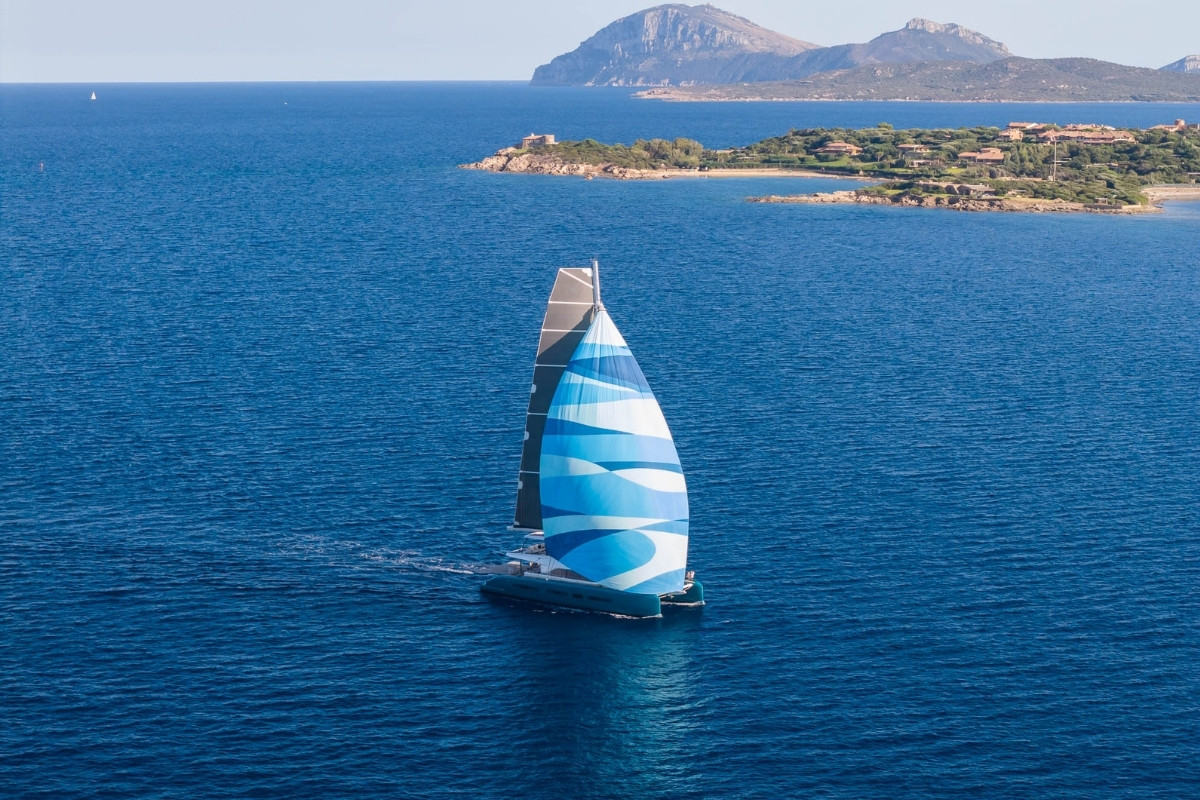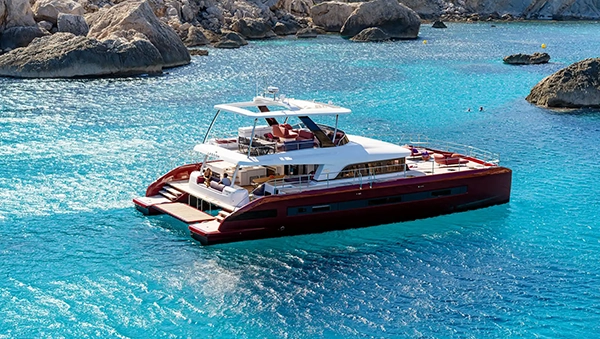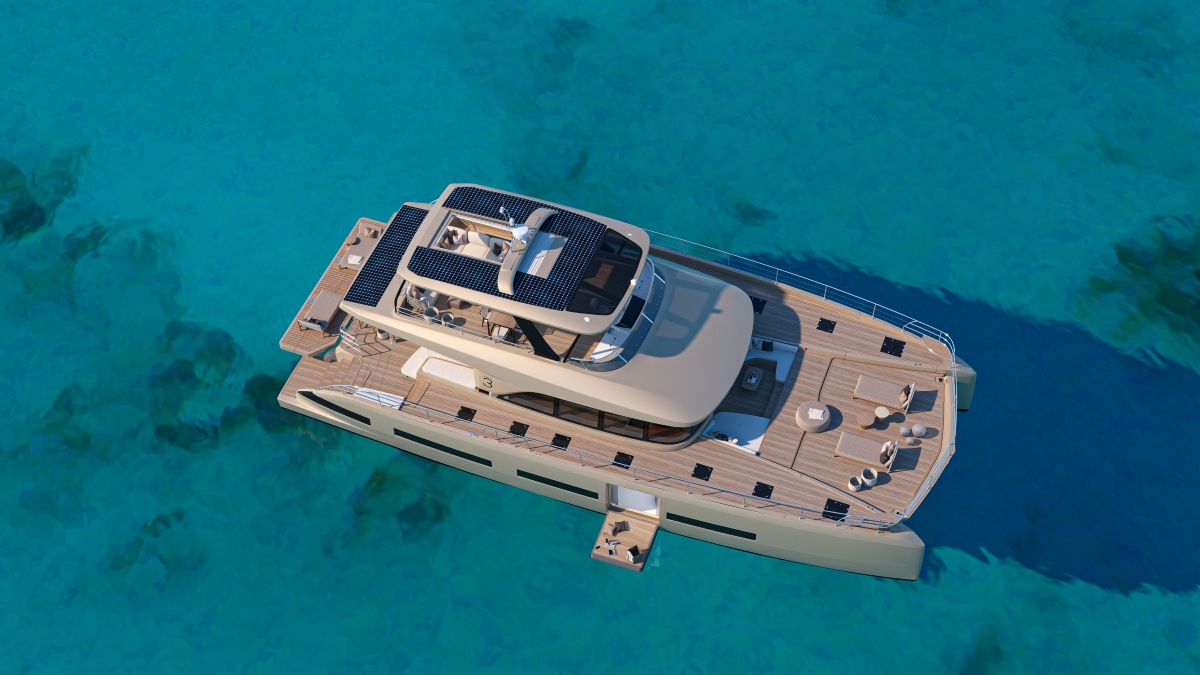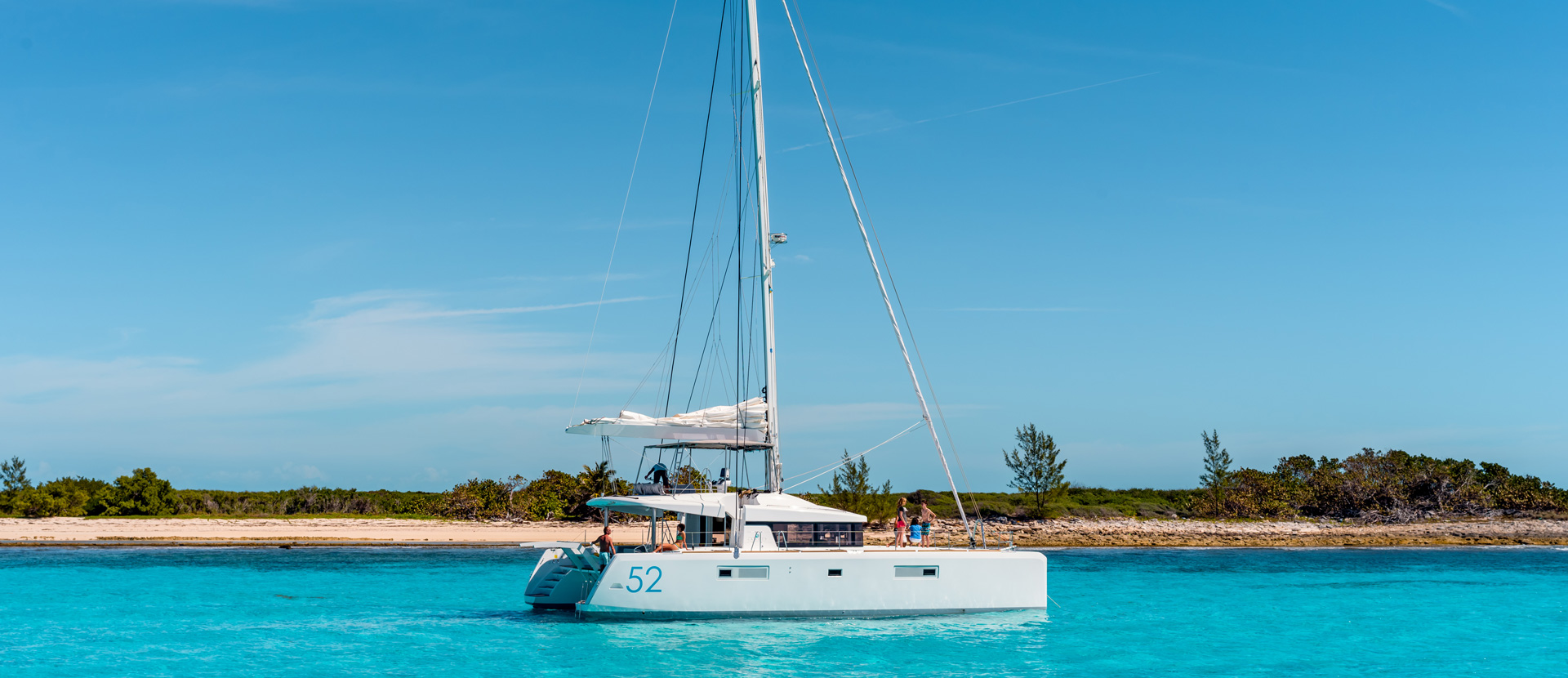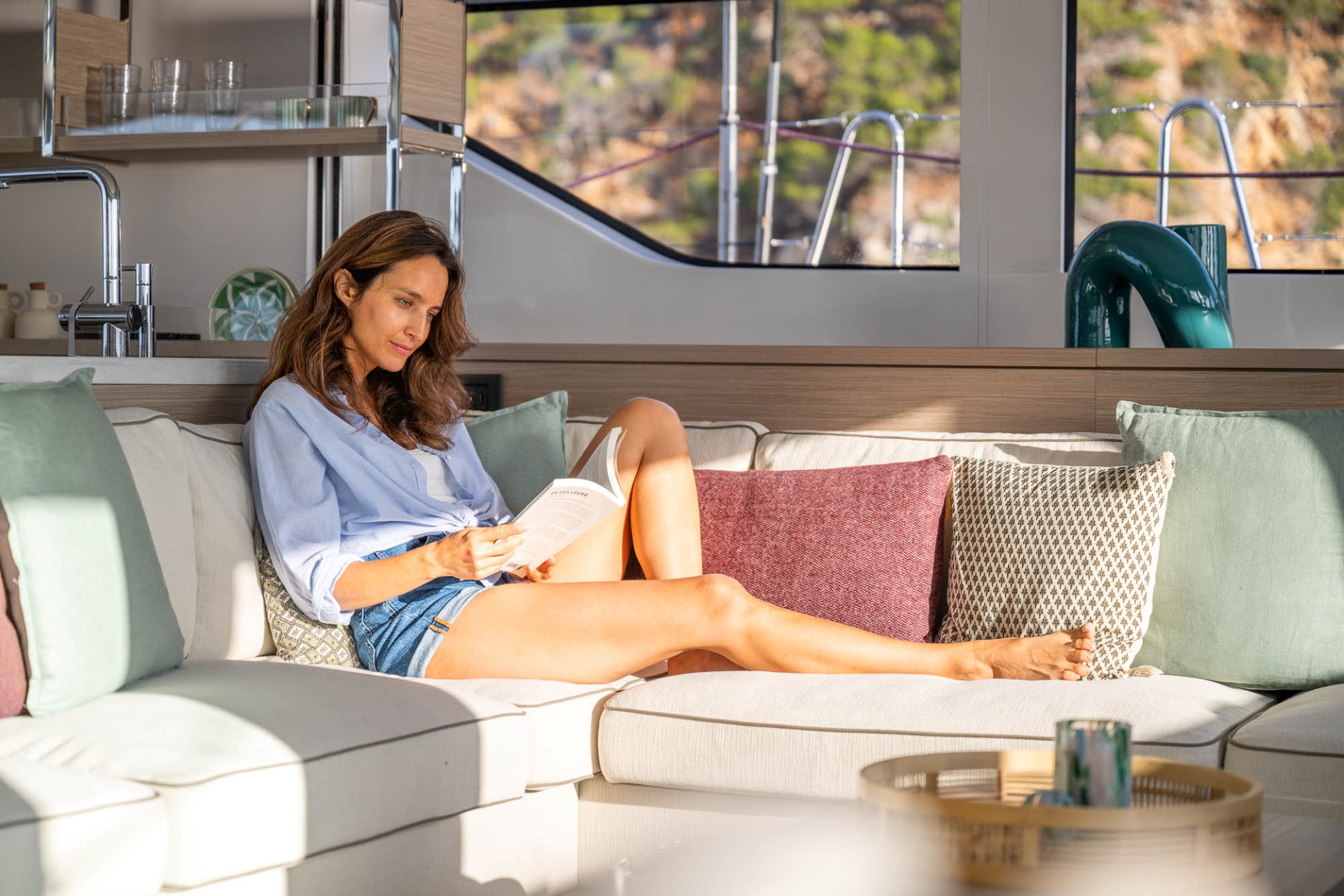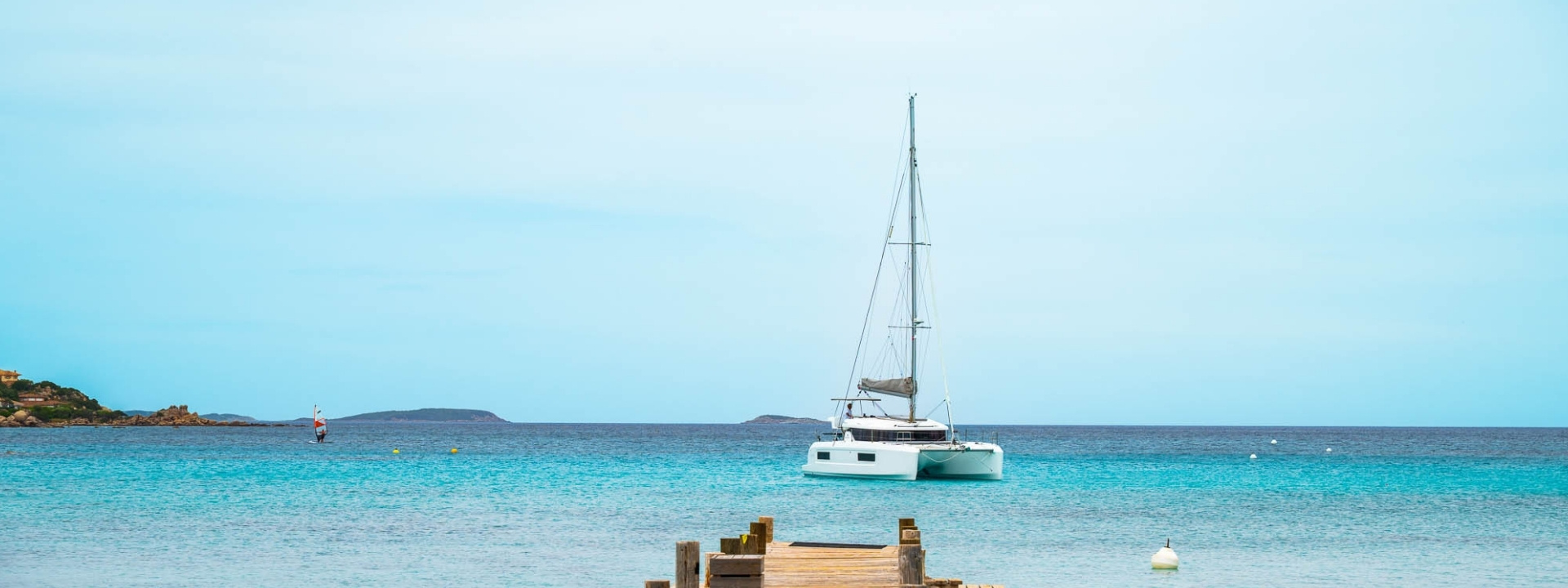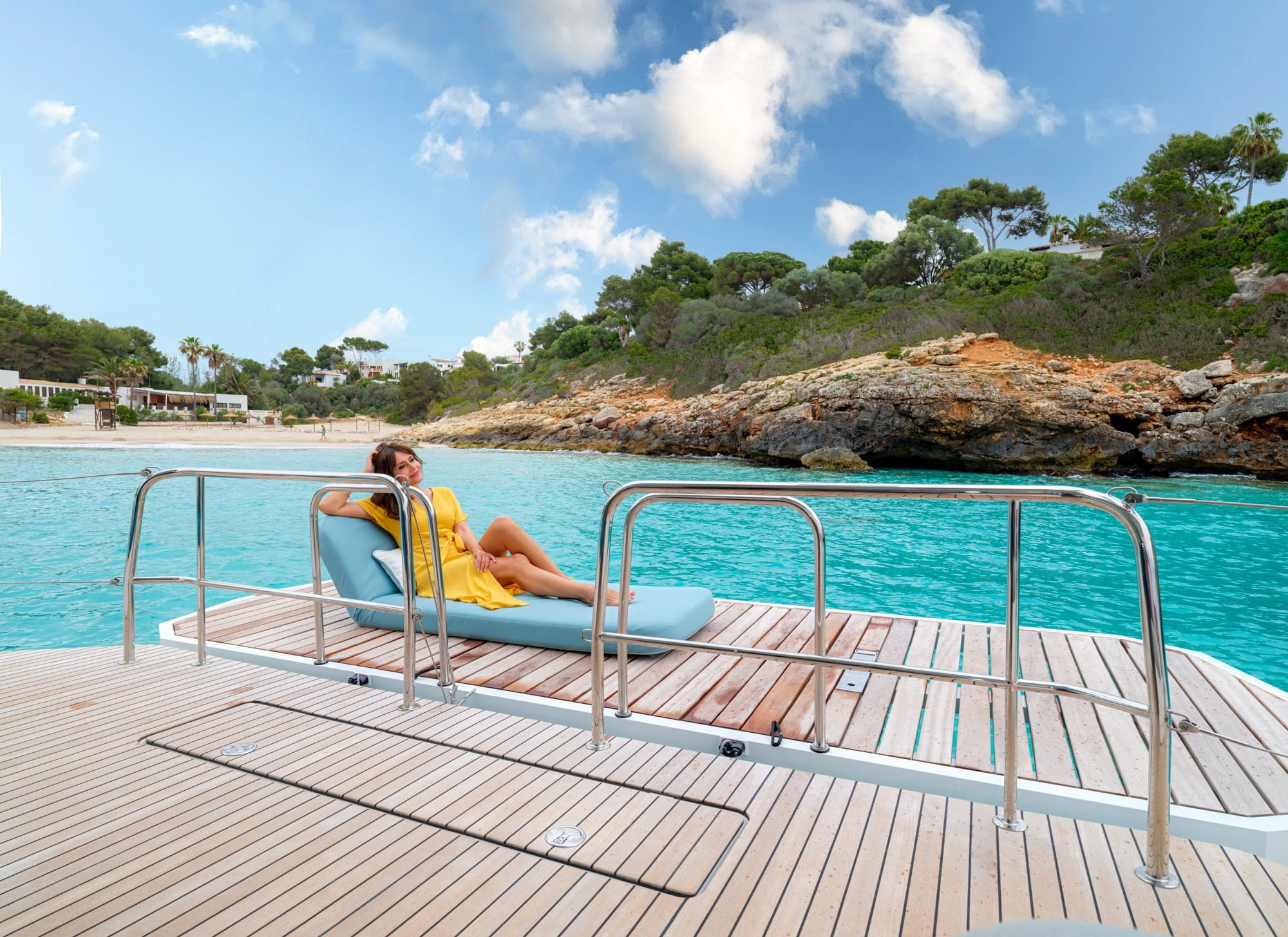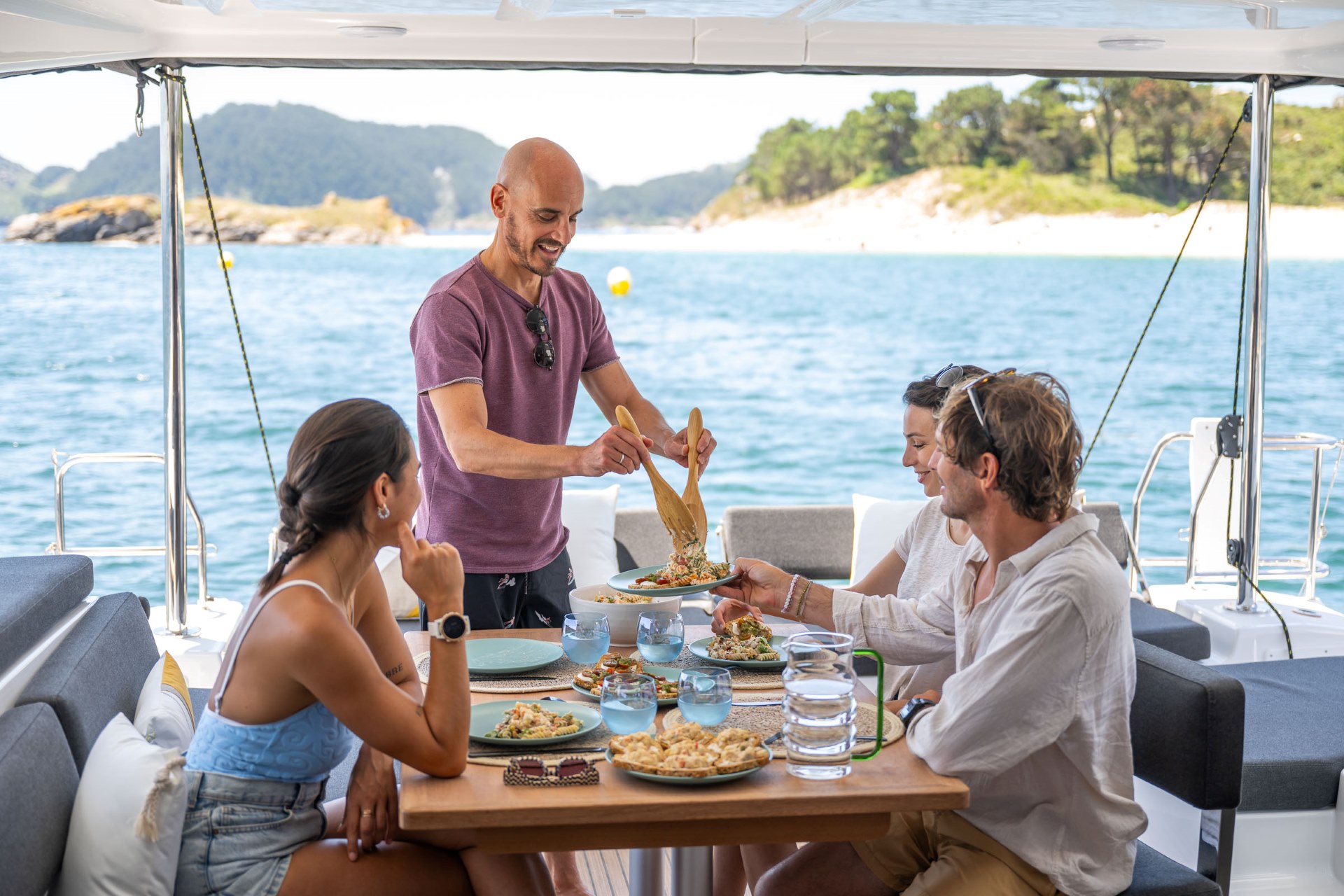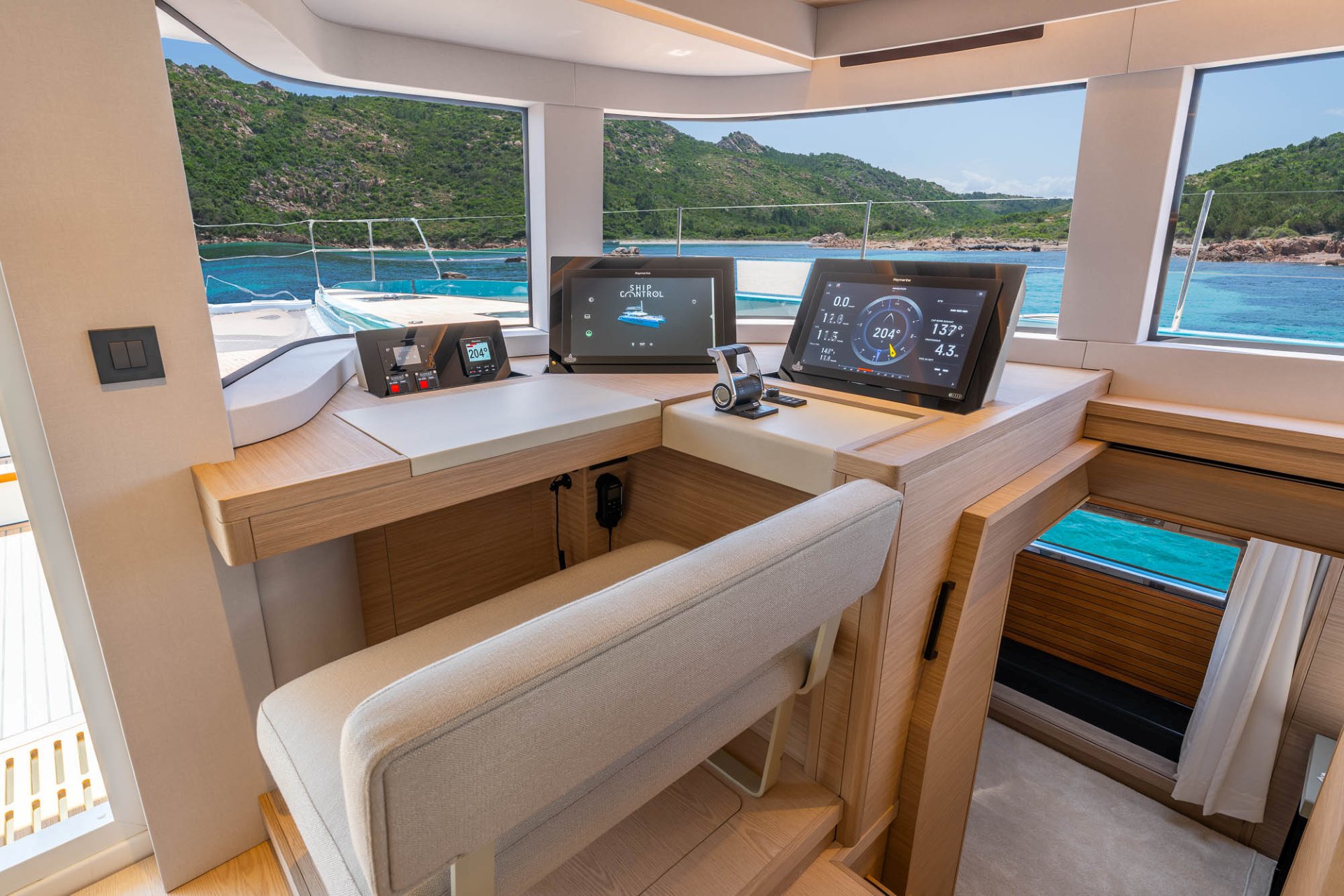Fuel Range, Essential for Offshore Cruising
If you are planning to cruise aboard a catamaran, you probably already know: when cruising offshore, far from ports and provisioning points, fuel and water autonomy is the gauge of freedom.
Self-sufficiency in water and in electricity, and notably storage capacity, enable cruising with greater flexibility.
As the owner of a Lagoon power or sailing catamaran, you can enjoy the sea at your own pace and adapt your travel plans to suit your interests and preferences, without having to worry about making frequent stopovers to meet the needs of the boat and her crew.
Aboard a Lagoon, Greater Freedom to ravel
First, large-capacity fuel tanks aboard our various models will enable you to envision cruising to your dream destinations, even those far-away destinations that, in other circumstances, would be unattainable!
With a capacity of between 300 and 8500 liters, the fuel tanks aboard Lagoon catamarans enable cruising for days – or even weeks – at a time, whatever the weather conditions may be, in comfort and with full autonomy.
But the ability to choose one course over another, an anchorage that is further away and less frequented, extending an enjoyable stopover… all of this depends directly on the storage capacity of your catamaran, and whether or not to produce water and electricity.
Sometimes, it is even a question of safety: it is the autonomy of the boat regarding these resources that will enable you to adapt or change your cruising itinerary, in the case of bad weather conditions, for example.
Finally, for those traveling long distances, limiting resupply stopovers when you do not need to refuel or restock freshwater is an important time saver.
With fewer logistical constraints, you can spend more time enjoying moments on the water!
Fuel and Water Storage Capacities Aboard a Lagoon, by Model
Sailing catamarans
| Model |
Fuel tank capacity
|
Water tank capacity
|
| Lagoon 38 |
2 × 200 L
|
2 × 150 L
|
| Lagoon 42 Millenium |
300 L
|
300 L
|
| Lagoon 43 |
300 L
|
300 L
|
| Lagoon 46 Iconic |
2 × 520 L
|
2 × 300 L
|
| Lagoon 51 Iconic |
2 × 520 L
|
830 L
|
| Lagoon 55 |
1100 L
|
960 L
|
| Lagoon 60 |
1300 L
|
960 L
|
| Sixty 5 |
2 × 650 L
|
1000 L
|
| Eighty 2 |
2 × 800 L
|
1000 L
|
Power catamarans
|
Model
|
Fuel tank capacity
|
Water tank capacity
|
|
Sixty 7
|
5500 L
|
1000 L
|
|
Eighty 3
|
8500 L
|
2 × 800 L
|
Evaluate Energy Use and Water Requirements
It is impossible to discuss fuel and water autonomy aboard a catamaran without talking about the real needs of the crew. In function with your cruising and travel plans and your future destinations, you will not necessarily require the same storage capacity and equipment on board.
Before a long passage or big cruise, we advise you to evaluate your fuel, energy, and freshwater needs – notably, by taking account of the estimated time and distance between stopovers, the number of people on board, and the type of activities planned.
Lighting, electronics, water pumps, the refrigerator, the freezer... for energy autonomy while cruising, consider making precise estimations of the real energy consumption of each piece of equipment!

